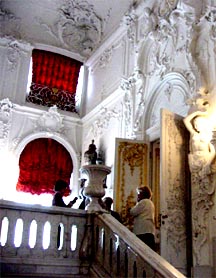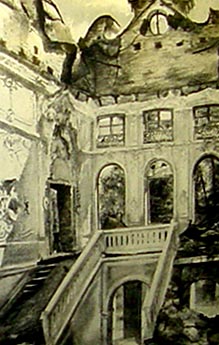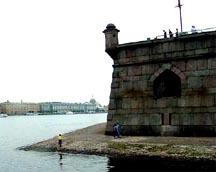About 8:30 we left for Tsarskoye Selo (Tsar's Village), now called Pushkin. just outside St Petersburg. With a marvelous ensemble of palaces and parks, it is particularly famous for its impressive baroque Catherine Palace where Catherine the Great lived and died. The palace was almost totally destroyed during World War II, but there has been an unparalleled restoration effort undertaken since the war.


The Germans had set up camp in the palace during World War II during the three-year seige of Leningrad (now St. Petersburg) when Nearly 650,000 people died of starvation and more than 17,000 were killed.
When Peter the Great re-conquered the lands along the Neva River in 1703, he decided to build a fort to protect the area from possible attack by the Swedish army and navy. The fortress was founded on a small island in the Neva delta on May 27, 1703 (May 16 according to the old calendar) and that day became the birthday of the city of St Petersburg. The Swedes were defeated before the fortress was even completed so from 1721 the fortress housed part of the city's garrison and rather notoriously served as a high security political jail. Among the first inmates was Peter's own rebellious son Alexei. Later, the list of famous residents included Dostoyevsky, Gorky, Trotsky and Lenin's older brother, Alexander. Parts of the former jail are now open to the public...

In the middle of the fortress surrounded by tourists and government buildings still in use there is the Peter and Paul Cathedral, a church where all the Russian Emperors and Empresses from Peter the Great to Alexander III are buried. The Cathedral was the first church in the city to be built of stone (in 1712-33). The design of the cathedral is most unusual for a Russian Orthodox church but who could tell the day we arrived. Like much of St. Peterburg it was under scaffolding as the city prepares for its 300 anniversary in 2003.